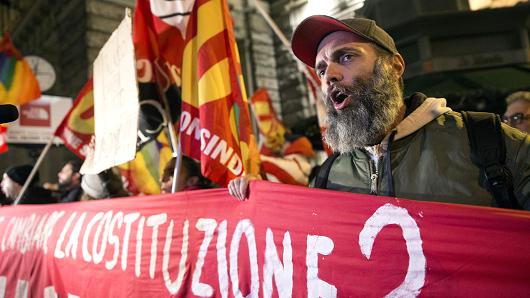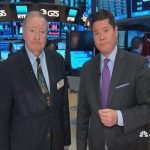For how tumultuous of a year it’s been for business and politics, it’s somehow fitting that 2016 should end with Americans banks sitting pretty as an oasis of stability.
After an explosive move higher during November, U.S. banks got another boost Monday from the “no” vote in the weekend’s Italian referendum. One of the net effects of the vote was that a bank bailout for the nation’s big institutions looks less likely, as populist sentiment continues to grow.
Another is a further reminder that a U.S. banking sector that for years held pariah standing is suddenly a darling.
“Clearly, this is good for U.S. banks,” said Chris Whalen, who covers financials as senior managing director and head of research at Kroll Bond Rating Agency. “If you’re a global investor, you want exposure to financials. You’re not going to be going into Europe. There’s no reason to own those names until we get clarity of what they’re going to do.”
Italian banks face an especially thorny issue in trying to rebuild market confidence.
The primary problem is with nonperforming loans — or those which have gone delinquent for 90 or more days. Italian banks have about 356 billion euros ($377 billion) on their books and not nearly enough capital to cover them.
Had Italians voted “yes” on the referendum, it would have concentrated more power in Rome and given the government more leeway to help the banks. As it stands, the “no” vote leaves a complicated legislative structure in place that makes it difficult for the country to pass laws.
In practical terms, that means banks are going to have to go out and raise capital to cover their nonperforming loans, something that could be difficult considering the shape of their balance sheets. European regulators have looked to avoid situations where individual banks were singled out as winners or losers.
Investors dumped Italian banks in Monday trading, sending Banca Monte dei Paschi di Siena down about 4.5 percent Monday. The bank’s shares have plunged more than 86 percent over the past 12 months as the institution looks for a workable way to deal with its bad loans.
U.S. banks’ shares, meanwhile, rallied from the open, with the KBW Nasdaq Bank Index rising about 1.3 percent in morning trade. The index is up more than 22 percent year to date, owing significantly to a post-election surge on belief that President-elect Donald Trump’s policies will generate greater growth, higher interest rates and a lower regulatory environment than has been in place over the post-financial crisis years.
Another round of turmoil in Europe — so-called contagion that spreads from Italy to other parts of the Continent — could make U.S. banks even more appealing.
“What we’ve seen with all of these European banking crises is that the United States banks have been able to take market share,” said Dick Bove, vice president of equity research at Rafferty Capital Markets. “Given the fact that there is general consensus everywhere else that the U.S. banks are well-capitalized with excess liquidity, they take market share.”
Indeed, the domestic bank rebound has made the sector matter again after years of poor performance following the global financial crisis in 2008. Financials now have a market cap of $2.8 trillion, or 14.8 percent of the cap-weighted S&P 500, where it now ranks as the second largest of 11 sectors. Yet financials are trading at just 14 times earnings, the second-lowest multiple on the index.
Still, there are some concerns that the rally may be ahead of itself.
Some of the factors investors believe will help banks, particularly higher rates and widening spreads, won’t be felt immediately, Whalen said.
“Will Trump and higher rates and deregulation help banks? Yes, no question,” he said. “But that’s a medium-term proposition, that’s not this quarter.”





